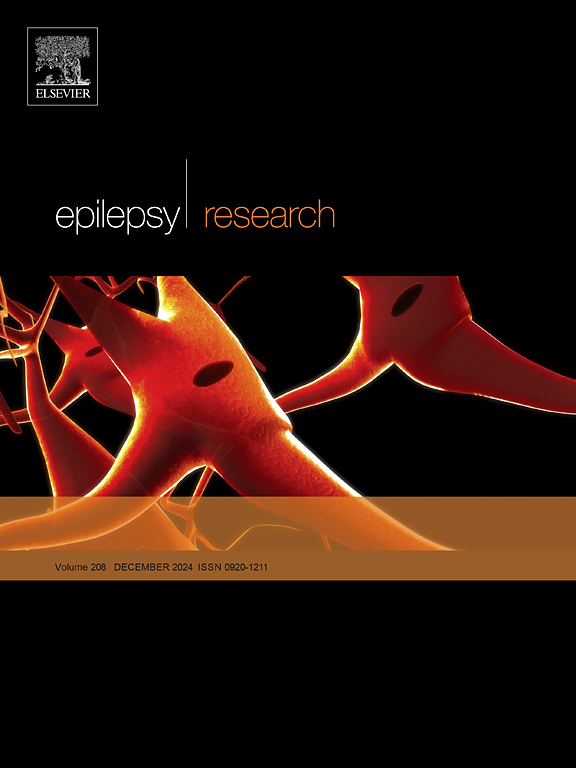创伤后癫痫发生循环microRNA生物标志物的发现和验证的临床前方法标准化——从EpiBioS4Rx项目中获得的经验教训
IF 2
4区 医学
Q3 CLINICAL NEUROLOGY
引用次数: 0
摘要
目的分析epbios4rx国际多中心项目中创伤后癫痫(PTE)血浆miRNA生物标志物发现和验证的统一和标准化的成功情况。方法将成年雄性Sprague-Dawley大鼠随机分为3组(芬兰、澳大利亚、美国),分别接受外侧液体撞击致创伤性脑损伤(TBI)和假手术治疗。损伤后第7个月行视频脑电图(vEEG)检测自发性癫痫发作。在基线和脑外伤后48 h采集尾静脉血浆进行microRNA (miRNA)分析。生成了用于记录和监测分析前活动的通用数据元素,包括住房条件、损伤后护理、血液采样、血浆制备、血浆质量、储存和运输。在一个研究地点(芬兰)采用现场标准化程序,使用液滴数字PCR (ddPCR)进行miRNA分析。结果在最终分析队列中,85% %(209/245)的大鼠成功测量了2天miRNA水平。排除与样本量小、溶血和ddPCR RNA提取失败有关。大多数导致样品排除的分析前因素与非最佳血浆移液有关。我们还认识到在数据输入和人员培训监测方面存在的差距。结论我们的研究表明,进行成功的血浆miRNA生物标志物分析需要实验室之间的程序协调、方案标准化、纳入和分析质量控制、研究人员培训以及持续监测对预先商定的方案的遵守情况。本文章由计算机程序翻译,如有差异,请以英文原文为准。
Standardization of preclinical methodologies for discovery and validation of circulating microRNA biomarkers for post-traumatic epileptogenesis – Lessons learned from the EpiBioS4Rx Project 1
Objective
To analyze the success of harmonization and standardization of plasma miRNA biomarker discovery and validation for post-traumatic epilepsy (PTE) in the EpiBioS4Rx international multicenter project.
Methods
Adult male Sprague-Dawley rats were randomized to lateral fluid-percussion-induced traumatic brain injury (TBI) or sham operation at three study sites (Finland, Australia, USA). Video-electroencephalogram (vEEG) was performed in the 7th post-injury month to detect spontaneous seizures. Tail vein plasma was collected at baseline and 48 h after TBI for microRNA (miRNA) analysis. Common data elements were generated to document and monitor pre-analytic activities, including housing conditions, post-injury care, blood sampling, plasma preparation, plasma quality, storage, and shipping. miRNA analysis was performed using droplet digital PCR (ddPCR) at one study site (Finland) with on-site standardized procedures.
Results
The 2-day miRNA levels were successfully measured in 85 % (209/245) of the rats included in the final analysis cohort. Exclusions were related to small sample volume, hemolysis, and failed RNA extraction for ddPCR. Most of the pre-analytical factors leading to sample exclusions were related to non-optimal plasma pipetting. We also recognized gaps in data entry and monitoring of personnel training.
Conclusions
Our study demonstrates that conducting a successful plasma miRNA biomarker analysis requires procedural harmonization between laboratories, protocol standardization, inclusion and analysis of quality controls, training of researchers, and continuous monitoring of adherence to pre-agreed protocols.
求助全文
通过发布文献求助,成功后即可免费获取论文全文。
去求助
来源期刊

Epilepsy Research
医学-临床神经学
CiteScore
0.10
自引率
4.50%
发文量
143
审稿时长
62 days
期刊介绍:
Epilepsy Research provides for publication of high quality articles in both basic and clinical epilepsy research, with a special emphasis on translational research that ultimately relates to epilepsy as a human condition. The journal is intended to provide a forum for reporting the best and most rigorous epilepsy research from all disciplines ranging from biophysics and molecular biology to epidemiological and psychosocial research. As such the journal will publish original papers relevant to epilepsy from any scientific discipline and also studies of a multidisciplinary nature. Clinical and experimental research papers adopting fresh conceptual approaches to the study of epilepsy and its treatment are encouraged. The overriding criteria for publication are novelty, significant clinical or experimental relevance, and interest to a multidisciplinary audience in the broad arena of epilepsy. Review articles focused on any topic of epilepsy research will also be considered, but only if they present an exceptionally clear synthesis of current knowledge and future directions of a research area, based on a critical assessment of the available data or on hypotheses that are likely to stimulate more critical thinking and further advances in an area of epilepsy research.
 求助内容:
求助内容: 应助结果提醒方式:
应助结果提醒方式:


